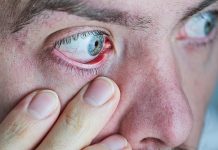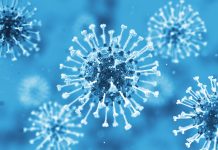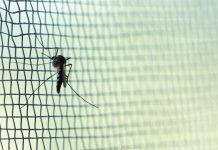Chronic liver diseases can have a detrimental impact on physical and mental health; we explore the underlying causes, symptoms, and treatment for primary biliary cholangitis
Primary biliary cholangitis, also known as primary biliary cirrhosis or PBC is a type of chronic liver disease whereby the small bile ducts which help to transport waste products from the liver become inflamed and are slowly destroyed. As the bile ducts become more inflamed, their functionality is inhibited, causing bile to build up inside the liver and damage healthy tissues. This degradation of tissues can lead to scarring (cirrhosis) and prevents the liver from functioning correctly.
Women are nine times more likely than men to develop PBC, with those aged between 45 to 65 being most at risk. According to recent estimates, approximately 65 out of every 100,000 women in the U.S. have PBC.
While no cure exists, medications are available to support associated symptoms and slow disease progression. Equally, the severity of the disease can vary significantly between individuals; for some, PBC can develop slowly over several decades.
What are the main symptoms of primary biliary cholangitis?
According to the National Institute of Diabetes and Digestive and Kidney Diseases (NIDKK), about 60% of people with PBC are diagnosed before symptoms occur; some are asymptomatic for years following diagnosis. However, common signs for those who experience symptoms include:
- Bone and joint aches
- Fatigue
- Itchy skin
- Dry eyes and mouth and/or pain or discomfort in the upper right side of their tummy.
The NIDKK also notes that people with primary biliary cholangitis may have other underlying health conditions, including autoimmune thyroid diseases, Raynaud’s disease, Sjögren’s syndrome, scleroderma, and autoimmune hepatitis.
How is primary biliary cholangitis diagnosed?
People are often diagnosed with PBC after having a routine blood test for something else. If PBC is suspected, a patient will have a blood test to check for antimitochondrial antibodies (AMA). Once diagnosed, a patient may be invited for an ultrasound to rule out other diseases and evaluate the bile ducts and liver condition. A liver biopsy may also be required, whereby a small sample of liver tissue is taken to confirm the diagnosis and to help doctors decide on the best course of treatment.
How much is known about the causes of PBC?
While the causes of PBC are not entirely clear, it is considered an autoimmune disease because the body’s natural defence system mistakenly attacks the bile ducts. While it is unclear why this happens, a combination of subtle changes is thought to impact the immune system’s functionality. According to studies, genetics could affect a person’s likelihood of developing PBC and thus make them susceptible to environmental factors that trigger an autoimmune response. These environmental factors include smoking, infections, and exposure to certain chemicals.
According to the NIDKK, primary biliary cholangitis is more common in people who are white compared with other racial or ethnic groups and people who have a parent or sibling – particularly an identical twin – with primary biliary cholangitis.
How is PBC treated?
Treatments are available to help people manage symptoms and slow down disease progression.
Among these is Ursodiol, a naturally occurring bile acid (ursodeoxycholic acid or UDCA) that can help the body transport bile from the liver to the small intestine. If used early enough, Ursodiol can improve liver function and may delay or keep patients from needing a liver transplant. For those who do not respond to this daily medication (40% of patients do not achieve a suitable reduction in alkaline phosphatase (ALP) or bilirubin with UDCA, and 5-10% are unable to tolerate UDCA), they may be prescribed obeticholic acid.
The drug, also known under its brand name Ocaliva, was approved in May 2016 to be used in combination with Ursodiol or as a single therapy. Obeticholic acid reduces the liver’s exposure to toxic levels of bile acids by increasing bile flow and reducing bile acid production. However, it can cause side effects and has not been shown to reverse deterioration or prevent cirrhosis. Hence it is not recommended for people with long-term liver damage.
Immune system suppression medicines, including prednisone or azathioprine, may be prescribed, and treatments are available to help patients with associated symptoms. A liver transplant may be offered if patients do not respond to treatment.
Lifestyle changes for PBC
To help prevent further liver damage, doctors may recommend a series of lifestyle modifications such as dietary changes, avoiding alcohol, smoking and stress and exercising. Since the disease can progress slowly over several years, and many people experience delayed symptoms, adopting healthy habits may help prevent complications further down the line.
Clinical trials for chronic liver diseases
An increasing number of research and development projects are underway to develop novel therapies for treating PBC. According to DelveInsight, there are 22+ active players working to develop 24+ pipeline therapies to improve treatment options for PBC. An upcoming drug, CNP-104, is currently in development. It utilises Cour’s nanoparticle platform (CNP), a unique and exclusive system that merges disease-specific pathogenic antigens with advanced pharmaceutical nanoparticles. These nanoparticles imitate the natural elimination process of dead or dying cells from the body.
Part of the NIDDK’s remit includes conducting and supporting clinical trials for liver diseases, and they have information on their website about how people can find out about clinical trials and participate. The ClinicalTrials.gov database is a comprehensive resource consisting of clinical studies that are privately and publicly funded and conducted across the globe.
In 2017, an international group of researchers conducted the most extensive study of its kind into the genetic associations underlying a similar chronic liver condition called primary sclerosing cholangitis (PSC) and how it is impacted by inflammatory bowel disease (IBD).
They studied the DNA of approximately 4,800 people with PSC, a condition causing bile ducts inside and outside the liver to become inflamed. They compared it to the DNA of almost 20,000 healthy individuals. They uncovered four areas of the genome with more common variants in people with the disease. One of the variants causes higher levels of a protein called UBASH3A, suggesting that this protein may have a role in PSC and could therefore be a therapeutic target.
As part of their research, the scientists collaborated with the International IBD Genetics Consortium, of which the NIDDK’s IBD Genetics Consortium is a member. They analysed the genomes of individuals with PSC and compared them to those with irritable bowel disease (IBD). The study revealed that genetic factors associated with PSC are more strongly associated with ulcerative colitis than Crohn’s disease, another form of IBD.
This could be the reason why a more significant number of people with PSC have ulcerative colitis rather than Crohn’s disease. Additional research could help identify the specific genes responsible for PSC. It may also lead to the development of effective therapeutic options and improved screening techniques and ultimately shed light on the drivers of chronic liver disease.
References
- https://www.niddk.nih.gov/
- https://liverfoundation.org/liver-diseases/autoimmune-liver-diseases/primary-biliary-cholangitis-pbc/
- https://www.globenewswire.com/news-release/2023/01/23/2593533/0/en/Primary-Biliary-Cirrhosis-Clinical-Trial-Pipeline-Insights-Featuring-22-
Open Access Government editorial
@openaccessgovernment.org
Editor's Recommended Articles
-
Must Read >> Alcoholic liver disease: why research is vital











